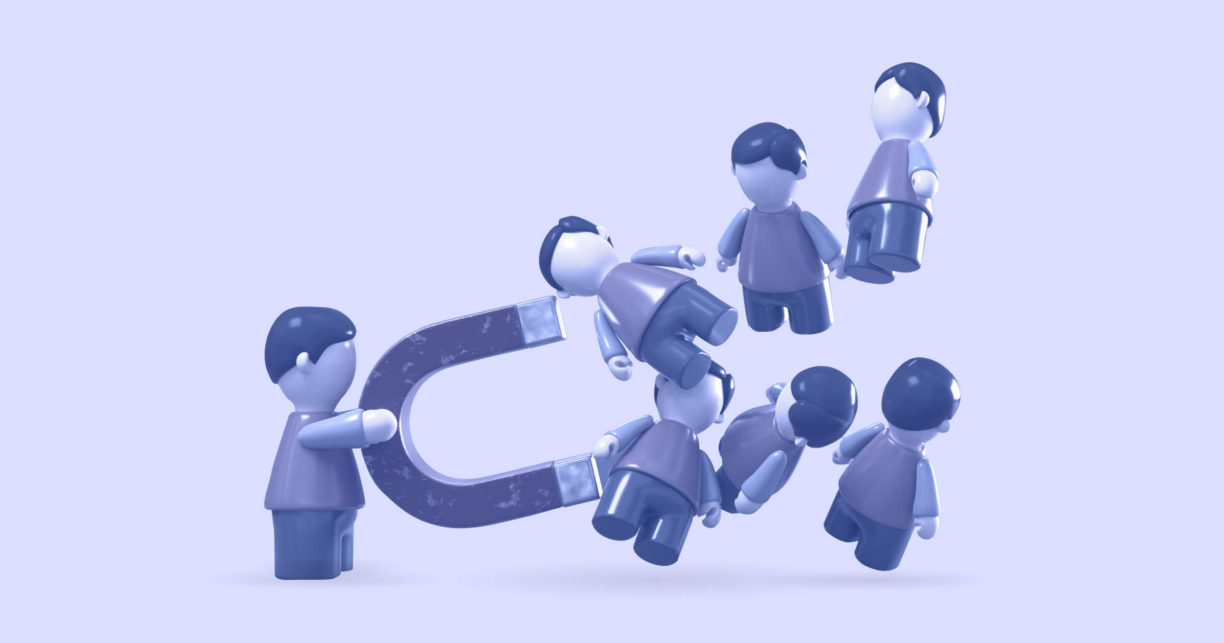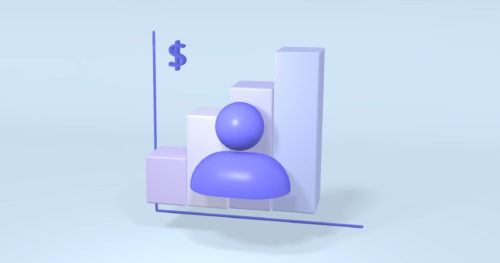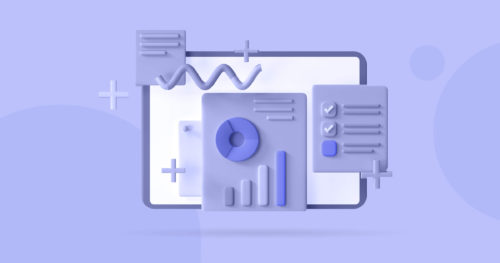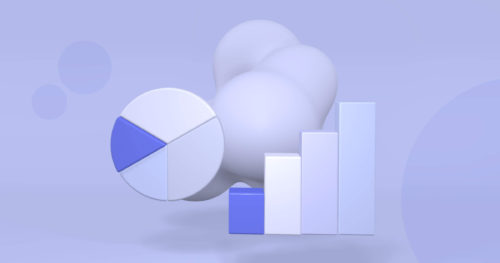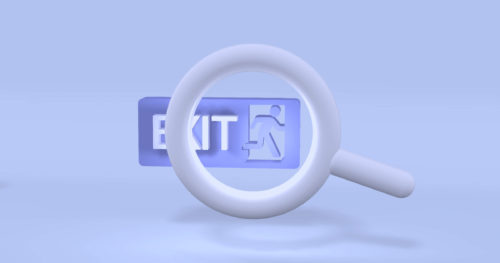There are several metrics that help businesses to understand their customers, brand, business model, engagement and points of attrition with customers. However, it might seem hard for company owners to focus on the metrics that really matter, especially when it comes to customer retention.
On this article, we’ve talked about what retention metrics are, how they can be used for your business and which are the key metrics you should watch closely as an eCommerce business that wants to improve retention.
What are Customer Retention Metrics?
Customer Retention Metrics refers simply to the measurement of how a business or an organization allows existing customers and clients to keep buying and supporting their products and services. It involves essential factors and components which describe how clients continuously purchase goods or avail services of the company.
It gives the company ample information on the status, demand for products, Repeat product purchases, incremental revenues, the return rate of products, the weekly or monthly number of active product users, or even the churn rate of present customers.
These various metrics are essential tools to attain target sales and customer loyalty. It includes measurements that quantify a business`s performance within a specified period, and it constantly requires recording from the beginning of the period up to its ending. Producing a series of documentation on tracking the retention metrics of varying factors can help a company in its strategic planning and vital decision-making activities.
Why are They Important?
These metrics are essential elements that shed light on the direction a company must pursue to experience an incremental increase in clients retention and achieve exceptional customer lifetime value. These quantifications give any business insights into their products and services, which guides them on their branding and customer services programs.
Higher retention improves recurring revenues and eventually upsells and cross-sells of products and services. We all know that a satisfied client is the best way to do advertising and product referrals without any additional charge. The ability to retain customers and make them loyal customers is a great way to maintain and raise product revenues.
Suppose you also want to know the rate at how many of your loyal customers are not currently placing orders. In that case, you can also achieve this by delving into the different retention metrics like the churn rate and loyal customers rate.
On the other hand, the time between purchases will gauge how long clients generally take to make a repeat purchase of your good and services.
How Do You Measure Customer Retention?
It is essential to know how to calculate your Customer Retention Rate (CRR); you need the following data within a given period.
The total number of clients or customers you have at the end of the given period
The total number of new clients that were added to your list at the end of the given period
The total number of clients you have before the period started.
After gaining vital information on the following factors, it is now time to do the actual Math. Here are the steps:
Subtract from the total number of customers you have the total number of new clients added to your list at the end of the given period.
Divide by the number of clients you have at the beginning of the period
Multiply it by 100.
The Formula
CRR goes like this; always remember that it should be within the same period.
(The total number of clients or customers - The total number of new clients that were added to your list) / (The number of clients you have at the beginning of the period)Multiply the factor that you get to 100 percent.
Say that a clothing and textile company caters to 525 clients at the end of quarter one. They have gained 45 more clients within this quarter too. They have also noted that they have 500 clients before they begin the quarter so the computation will go like this.
CRR = (525 clients at the end of quarter one - 45 clients gained within this period) / 500 clients at the beginning of the quarterThen the answer will be
CRR = 0.96You will need to multiply it by 100% to get the actual rate.
So the CRR of the clothing and textile company is 96%.
Total number of customers at the end of the period less the number of new customers acquired/divided by the number of the customer at the start of the period.
The 10 Most Important Customer Retention Metrics for ECommerce
The ten most crucial retention metrics today are the following:
1. Customer Retention Rate
This is the rate at which a business retains existing clients at the end of a specified period. This most straightforward metric tells whether a current client avails goods or services again within a certain period. The retention rate can also indicate whether an existing customer-related program meant to keep them coming back is effective or not.
An example is regular clients on your e-commerce platform who purchase home equipment every month. It does not matter what kind of product he may buy, but the significant consideration is that he always has aperiodic purchases from your shop.
2. Existing Customer Revenue Growth Rate
The rate quantifies how you get a current client to increase the revenue he brings into the business. This metric is an effective way to measure customer retention since the success rate of acquiring an existing customer to purchase again is much higher than getting a new client and making him make some purchases. You can imagine a client who upgraded his regular purchase or brought additional items along with his major purchase would mostly mean success in client satisfaction.
You can consider here the techniques called upselling and cross-selling. Both terms mean additional revenues that a customer may bring into the business. If a customer buys an upgraded version of the exact related product, it means upselling. At the same time, cross-selling means that a client bought additional products that are pretty related to the products.
You can take these examples to understand better the two-term, which are common practices in an e-commerce platform. You are doing upselling to a client if you offer a client who always buys a tunic dress upgraded versions of tunic dresses or other types of dresses like maxi dresses, midi dresses, or mini dresses. On the other hand, you conduct cross-selling if you offer a client who regularly buys a dress another line of products related to her purchases, like accessories, shoes, or bags.
To have clients who gladly take your offer and include your suggested items in their carts before they check out are reasonable indications of retained customers and an increase in the earnings from an existing customer.
These numbers are usually measured within a month.
You can evaluate the formula to achieve this Monthly Revenue Rate (MRR) by subtracting the MRR at the beginning of the month(MRRB) from the MRR by the end of the month(MRRE). Afterwhich divide it by the MRR at the beginning of the month. Then finally, multiply to one hundred percent.
MRR = [(MRRE - MRRB)/ MRRB ] x 100%With consistent tracking of MRR, you can verify whether existing customer brings about increasing revenue. You should note that this metric should not include income from newly acquired clients, and this metric applies to specific single accounts you may be handling over long periods. You can also easily track the gain and losses you made with the particular client within the given period.
See, for example, a particular client who was able to bring a revenue of $50,000 to a hypothetical company business at the end of a quarter, which started only from $30,000 three months ago.
MRR= [(50,000 - 30,000)/30,000] x 100%
MRR = [20,000/30,000 ] x 100%
MRR = 67%This client has a positive experience with the company, not only indicated by the repeat purchase but also by a high percentage of additional revenue; he was able to trust the company within three months.
3. Customer Churn Rate
This Customer Churn Rate (CCR) refers to the metric which measures the rate at which your existing client ceased or stopped conducting business with your business within a specified time. If tracked, this can give us insight into the trends and factors that affects the relationship we have built with our existing clients. If studied too, this rate can also show us the effectiveness of our related program to maintain current clients, such as promos and freebies we attached to their significant purchases. It also allows us to study the factors contributing to customer churn and what other possible strategies we can implement to combat customer churn.
It is easy to get the customer churn rate (CCR). You just need to get the number of the existing clients at the beginning of the month (ECB), then subtract the number of existing clients at the end of the month, then divide it by the number of customers you have at the beginning of the month, then multiply it by 100%.
CCR = [(ECB- ECE/ ECB] x 100% It is a reminder that the number of new clients within the month is excluded here. A churn rate of 6 – 8 percent is already quite alarming; a business owner should sit down, think of the possible reasons for such phenomena in their business, and conduct a strategic course of action to mitigate it.
For example, a handicraft business had a pool of 360 clients at the beginning of the month but was trimmed down to 345 existing clients. So what is the customer churn rate?
CCR = [360 -345/ 360] x 100%
CCR = 4.17%The church rate is quite allowable for this matter, a lower churn rate is beneficial for the company but it is always best to check in some common factors that are relevant to this churn rate, like
Slow process for onboarding and navigation: with the prevalence of digital gadgets and systems, your business aim should allow customers to get into your platform quickly. Every customer expects immediate access to your platform; your system should conveniently enable them to navigate the various products and services you offer. Should the platform fail to do this, most customers would turn to another company that may be serving the same related goods.
Lack of agreeable automation: the manner that involves the business process in acquiring the product and the business management that rules a company should be incorporated well into the available application developments to enable the retention of your valued customers. Most clients are less patient today to wait and be dragged into complicated pages of your platform, and These customers must find your platform user-friendly and technologically impressive.
Poor Customer Engagement: one of the top reasons why a client churned on a company and did not anymore come back for purchases is a poor customer relationship. Detailed components for these reasons are call holding, several call redirections, Inaccurate details regarding product purchases, inaccessibility of the company, machine answering calls, and unpleasant customer service. Some of these are catered well by providing excellent technological development in your company, and some are best answered by employing the rightful customer service officer to represent your company.
4. Revenue Churn Rate
A customer revenue churn refers to the loss incurred to the earnings a particular customer brings into the company. The possible reasons for revenue churn are the termination of the company’s service or non-subscription from it. It also defines how a company can retain and maintain their existing clients’ engagements and renewals of contracts from them.
This metric can be computed by simply getting the monthly recurring revenue (MRR) at the beginning of the period(MRRB), then subtracting from it the amount of the recurring revenue at the end of the period (MRRCE), then dividing it by the revenue at the beginning of the month(MRRB ), after which multiply it by 100 percent.
MRR = [(RCE- RCB)/RCB] x 100 %An example of this is holding the account of a toy company which has a total of $2500 at the beginning of the month, its revenues from the same clients amounting to a total of 2300 by month-end. How would you compute for the RCR?
MRR = [2300 - 2500/2500] x 100 %
MRR = -8%The MRR is still acceptable at this rate and period, but having to bear this rate within the next month would already cause a substantial impact on the revenues of the toy store; the business owner should have an immediate action for this occurrence.
5. Repeat Purchase Ratio
It is the rate at which your current customers come back to your store to make another purchase. It measures how much clients return to buy the product they need or want from you.
Long-term tracking of this factor can lead you to another essential component of your business, the loyal customers you have created through months and eventually years.
The repeat purchase ratio is a commonly used customer retention metric by companies and organizations who wish to know the effect they are making with their brands. The ratio indicated in these metrics provides insights related to products mainly acquired by clients, locations where the persistent purchase of products ( demographic factor), and the kind of client group that avails the product more, like age group and lifestyle component.
This metric can also be applied to businesses that involve customers in renewing a contract or a subscription.
To calculate the Repeat Customer Ratio (RCR), you need the information on how many existing clients made a come back to purchase on your store (EC). Then divide it by the total number of customers you had within the period (AC), after which, multiply it by 100 percent.
RCR = (EC/AC) x 100%As an example, we shall be taking the case of an online graphics application delivering graphics elements, design, and templates to enhance clients’ social media presence. The company wants to track its numbers by determining how many of its former customers are making a return purchase. So for this quarter alone, they have gathered the info that 1245 current clients renew their subscription within the quarter out of the 1890 customers they now have on their platform.
RCR = (1245/1890)x 100%
RCR = 65.87%This company has a brilliant way of engaging with their existing clients to maintain such a rate within the quarter. The challenge now lies in maintaining such a ratio and improving on it.
6. Product Return Rate
Product return rate (PRR) refers to the ratio where customers and clients have returned business products; this occurrence is basically due to defective items or parts and some specifications that did not meet the standards stated during the purchase.
This metric is specifically applicable for businesses that offer tangible products and goods and may involve a bulk number of products.
The time it also takes a return a product versus its purchase time is one significant factor regarding the metric. A business should well know what the period that they would include in their assessment is.
A less than 10% return is quite acceptable, especially for bulk purchases, but a ratio of 15% and more can already be damaging; that is why company leadership should take probable actions to alleviate the situation.
This metric is also a good indicator for a company to know which products need improvements and which ones work well.
This can be calculated by dividing the number of returns incurred within a specified period (PR) by the total number of purchases made within the month (TP) and multiplying the fraction by 100 percent.
PRR = (PR/TP)x 100%A good example is an e-commerce platform that sells toy cars, the company experience 450 returns by the end of two months of selling it. On the other hand, it sold 800 units within that period.
PRR = (450 /800)x 100%
PRR = 56.25%The ratio is quite alarming. That is why the company needs to check the reasons that contributed to such circumstances. The following are some reasons why product returns take place wrong sizing, long product delivery, customers’ expectations not met, specifications mismatched, incorrect product shipping, and customers do not need the product anymore, such as in cases of seasonal stuff that were days late for its purpose.
The marketing strategy also matters with product returns. Setting a better product on the platform than what is offered can lead to a high product return ratio. Every business must be responsible for its advertisement, and actual products must be used during ads to not raise expectations just for purchase.
7. Days Sale Outstanding
Day Sales Outstanding (DSO) Measures the length of time a company is able t to collect its payment from purchases it has. It is usually measured in days and is best inspected monthly, quarterly, or manual.
Having a higher DSO would also mean that the company will take a longer time to collect payments and thus suggest delayed payments from customers. . This may indicate that the customers delaying their payments are also experiencing dissatisfaction with the product or services.
DSO ratio is calculated from the amount receivable (AR) over the total amount of credited purchases (CP)within that specified period and then multiplied by the expected time of collection.
DSO = (AR/CP) x 100% Let us presuppose that a company has a total credit purchase of $50,000, and within that period, they have collected an amount of $45,000 from these sales in 90 days. Let’s now calculate the DSO.
DSO = ( 45,000/50,000) x 100%
DSO = 81 days The longer the time to collect payments, the likelihood that it will severe your customer’s retention some things must do some things to outwit such conditions.
Some of the popular solutions that companies employ to counteract low DSO are intensifying automation in the company’s platform, expanding payment links and options, customer-friendly payment terms, utilizing artificial intelligence to conduct the personal collection, and the worst, if not amended, company tend to disconnect to such customers.
8. Time Between Purchases
Time Between Purchases (TBP) measures the period customers return to your business to purchase again.
This is calculated by simply taking the number of individual purchases conducted by the particular client from your business (TIP) and dividing it by the total number of days between purchases (DBP). You should include only current customers in the total sales, excluding sales from newly acquired clients, and should be noted.
A customer relationship management (CRM) platform may help track the components needed for these metrics. Several CRM are available now, allowing managers to unload some monitoring tasks to software and focus on more critical matters of the trade.
TBP = TIP / DBPTake a hypothetical company that tracks the purchases of the Company AB Furniture; within a month, they noted that the company was able to conduct eight purchases of solid wood in their depot among the 26 days of purchases that they have on solid wood.
Compute for Time Between Purchases or TBP
TBP = 26 / 8
TBP = 3.5 daysThis is a good indication of good customer engagement by the store that their customers continually go back to them if they need other materials for their items. While having a longer time to return for purchase may take place, you can also check on some factors like you may be selling goods that are sturdier and takes time to wear out, or the products you sell may not provide satisfaction to clients that is why they tend to look for another option.
9. Loyal Customer Rate
This is a metric that considers the rate at which a customer is to make purchases with the business repeatedly. It depicts a reasonable satisfaction rate and functionality of products.
Having loyal customers means that.
Customers gained positive experiences while purchasing and using the product.
Describe the business base you have created for your trade. A good number of loyal customers means more numbers of customers utilizing your products and much more stable revenue for your business.
You have a good value for your products that clients kept buying from you.
A loyal customer rate or LCR is calculated by dividing the total number of clients that have purchased your business (LCB). This includes the existing customers who made additional purchases and those new ones who made multiple purchases within a specified period. Then you divide it by the total number of clients (TNC) within that given period. Afterwhich multiply it by 100 percent.
LCR = (LCB/TNC) x 100%Let us take a theoretical company that has a total number of 5,000 customers. Within that period, he observed that 500 existing customers made multiple purchases, not only that 250 new clients also stepped in and made several procurements. Now they desire to compute their LCR within the month.
LCR = [(500 + 250)/ 5000] x 100%
LCR = 15 %This business has already created a consumer base of 15%, quite an achievement already, but the company’s leadership should keep thinking and doing strategic marketing techniques to increase such LCR.
10. Customer Lifetime Value
A CLV refers to the revenue your particular client is generating for your business. A CLV is good when it is either maintained or upscaled. A decreasing CLV could mean a dissatisfied customer, or you still have to look for clients who can keep purchases over a long period.
It is calculated by multiplying the average purchase value (APV) of your particular client and the average number of purchases ( ANP) he probably can make within a specified time, and this is what we call customer value (CV). And then, we multiply the average customer value by the number of years (ANY) that these clients stay with us.
CV = APV x ANP
CLV = CV x ANYTake, for example, a specific client who always goes to a grocery store and can render $2,000 in an average of grocery items monthly for her family. Annually, she can do this 15 times and plans to do the shopping for more next ten years. What is the CLV of this specific customer?
CV = 2000 x 15
CV = 30,000Her CLV is
CLV = 30,000 x 5
CLV = $150,000How to Use These Metrics to Grow Your Business
These indicators are essential in maintaining and growing your experiences in providing satisfaction to your existing valued clients. These are meaningful numerical values that will allow you to improve customer lifetime values and exceptionally fulfilling revenues for your kind of trade.
How you use them will depend on the variable and factors that they measure. Here are some of the most applicable ways they can be applied to your business
The CRR is best used to have a general insight into the clients you retain within a period. You may include other details regarding the demography, lifestyle, age group, occupation, or gender depending on other Components you desire to track in your business.
A Customer and revenue churn ratios are best used in tackling matters that lead customers to shy away from the business. These are equally important factors to enhance customer retention and increase earnings.
The loyal customer rate is an effective way to delve into; also, these allow the company to see the profiles of their clients. It is also the best way to develop promotional programs to reward loyal customers and can also be a baseline on how to expand to those groups not utilizing your brand.
There are still several ways to make use of these retention metrics to have reliable bases for the course of action we do to retain customers and increase revenues.
Another common and beneficial retention metric for companies indicated through the number of days is the Day Sale Outstanding which allows the company to see how they perform in their collection of the client’s outstanding accounts. It lets them know too if the collection division of the business functions well.
It gives them also insight on how to improve by enhancing automation and communication with clients. Another metric is the Time between Sales; it lets you predict how soon a retained client will come back for another purchase. It enables you to update your inventories and restock products on display shelves before they come again to buy.
Conclusion
Whatever market or trade a company is involved with, it is always meaningful and beneficial for the company to determine relevant customer retention metrics so to provide a self-directed assessment that will guide them in the manner they reach out to clients, engaging them in becoming repetitive buyers and eventually transforming them into loyal customers. Thus, ensuring increasing revenue and a broad customer base for the product.
On the other hand, it benefits the clients too in so many ways. They are provided with better services, exceptional products, and even additional benefits to keep their loyalty.
It works both ways through the aid of various indicators. These measurements are practical to use and provide a depth of insight into the different components of your business.
FAQs
What is the difference between retention and loyalty?
Customer retention refers to how a company can retain its customers and clients for a certain period. It tells how many times customers went to buy in the store and purchase whether a new or a good he usually believes. On the other hand, customer loyalty takes time to build and indicates deeper engagements with your client. These terms are proportional to each other mathematically and are closely related terms.
A business has already turned a repeating buyer into a loyal customer if they had continually bought your products for a considerable time. They use the product, refer it to friends and family, and engage with you in various possibilities.
A loyal customer does not intend to opt for another related product even if another kind emerges in the market, and they tend to be emotionally attached and prefer your product among others.
How are churn and retention rates connected?
Churn and retention rates are opposite; Churn measures how an existing customer turns his back and walks away from your market, while retention is the number of existing clients who stay and have kept their purchasing powers geared at you.
Churn and retention are significant to your business since if you add them, they will give the total number of existing clients. Having great insights into these two factors is beneficial and healthier for your business. It lets you see the best practices of your business and which are the essential management factors that contribute to success and failure within a given period. It enables you to see the customers that churned down and see the possible reasons that made them decide that way. Through you can also conduct an introspect of your products to meet clients’ needs, you still target to reach.
What are good retention metrics?
A good retention metric will depend on the variable you need to track. A 100 percent retention metric is what every business or market would always aim to have. But due to some components affecting the industry, such as actual management, business flow, and customer-related factors, it may go down at some level. On the other hand, a ratio of 20% is very alarming, and 15% and below needs the most immediate mitigating action from the company’s leadership.
The reasonable retention rate may also vary from one trade to another, each niche is unique and holds specific attributes that could be used as points of referral on how we consider what good retention for a company is.
